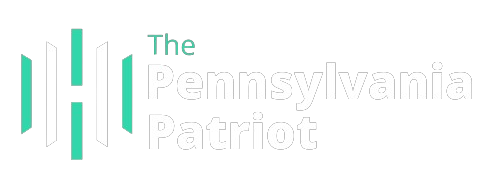Idaho resident Lynlee Lord said she took advantage of nutritional assistance programs that helped alleviate some of the stress she faced during her pregnancy after her partner’s death. Research shows that food insecurity can augment the risk of preeclampsia, premature birth and admission to the NICU. (Courtesy of Lynlee Lord)
Without Congress actions by Saturday, millions of people across the country will be cut off from access to government food assistance, including pregnant women or people with infants and newborn children.
This possibility brings back many tough memories for Lynlee Lord, a mother of three in rural Idaho. In 2014, when Lord was 24, her partner committed suicide. She was 11 weeks pregnant with his daughter and already had a 2-year-old son.
“I went from building a life with my best friend to having nothing and having to move into lucrative housing,” Lord said.
She also went to cosmetology school full time in Boise, Idaho, almost an hour away from where she lived, spending over 12 hours away from home each day. She worked on her father’s ranch and cleaned houses to earn money for gas. She tried to reduce her stress levels, but the one thing she wasn’t worried about was eating because she was receiving benefits from the U.S. Department of Agriculture’s Supplemental Nutrition Assistance Program, or SNAP.
“It took a lot of pressure off me,” she said.
Many studies have shown that adequate nutrition is vital for the developing fetus, a January studies published in the Journal of the American Medical Association found that food insecurity during pregnancy is associated with medical complications. Scientists have defined food insecurity as the fear that food will run out before there is money to buy it. Risks include preeclampsia, premature birth and admission to the intensive care unit.
The January study found that the risk of complications was highest in people who did not have access to food assistance. The increased rate was mitigated by food aid.
It’s unclear how many pregnant women on average utilize SNAP benefits, but the program helped feed 42 million Americans in 22 million households in fiscal year 2025. according to USDA.
The Trump administration has so far refused to utilize emergency funds to keep SNAP solvent during the government shutdown. Republican Senate Majority Leader John Thune said yes I won’t consider it a Democratic-led stand-alone funding bill to ensure the program continues during the suspension.
While officials in some states are taking steps to temporarily augment food aid, others, including Indiana AND Tennessee – they refused to step in.
Lord no longer needs food assistance, but approximately 130,000 Idahoans still do and will lose benefits on Saturday, November 1. The Women, Babies and Children program, which helps families provide formula and other supplemental foods, also may soon run out of funding in some states, including Idaho. The Idaho Capital Sun reported.
Instability and tough choices
Gestational diabetes – one of the more sedate complications that can result from food insecurity – affects up to 10% all pregnancies on average. The condition occurs when the placenta produces hormones that reduce insulin sensitivity, causing unstable blood sugar levels, requiring a more closely controlled diet and potentially the utilize of insulin or other medications to keep glucose levels in the normal range. Most cases are diagnosed in the third trimester of pregnancy, when the amount of insulin needed to maintain normal blood sugar levels is highest.
Stress, impoverished sleep, irregular meals and other physiological factors can also affect blood sugar levels. If left untreated or if glucose levels remain unstable in the last trimester of pregnancy, it can cause the fetus to grow too quickly, increasing the risk of stillbirth and other complications such as high blood pressure and low blood sugar in the baby after birth.
Dr. Chloe Zera, chair of the Society for Maternal-Fetal Medicine’s Health Policy and Advocacy Committee, specializes in gestational diabetes and said she saw a patient on Tuesday who was concerned about losing SNAP benefits.
“Adding this to an already stressful diagnosis creates a huge challenge for people,” Zera said. “There is so much guilt, shame and blame that comes with gestational diabetes and diabetes in general during pregnancy.”
People with gestational diabetes who already have children and are unsure about food most often feed their children in front of them, Zera added.
“They’re going to make really difficult choices, which means they have even less control over their eating,” she said.
Dr. Andrea Shields, an obstetrician-gynecologist and maternal-fetal medicine specialist at the University of Connecticut, says uncontrolled gestational diabetes can cause low blood sugar levels in babies after birth, which is associated with neurodevelopmental problems later in life. If SNAP benefits end, more people will have to get artistic in finding ways to lend a hand pregnant patients without lend a hand from the federal government.
“It’s a great example of why we pay taxes and why we want to help society in general, because we don’t have to create generational problems that will actually impact the unborn fetus,” Shields said.
Lord said that if she were in the same situation today as she was 10 years ago, she might have to consider an option that never occurred to her at the time – abortion. Even though it was her partner’s only child and abortion is currently banned in Idaho, Lord said she may have had to find a way to end the pregnancy out of necessity, especially given the current costs of rent, child care, food and other expenses.
“I would probably choose my baby who is alive,” she said. “It was really scary for me at the time and I can’t even imagine something like that would happen in today’s world.”
This story was originally produced by News from the USwhich is part of States Newsroom, a nonprofit news network that includes Pennsylvania Capital-Star, and is supported by grants and a coalition of donors as a 501c(3) public charity.

